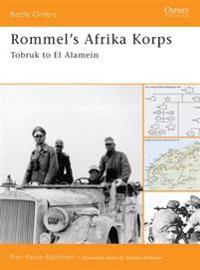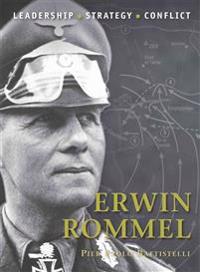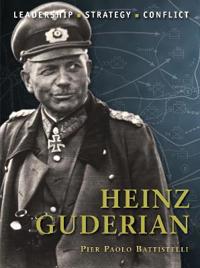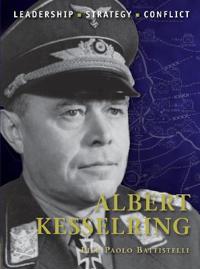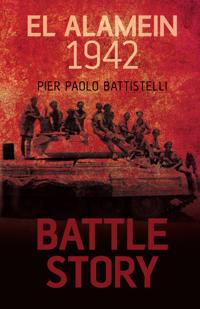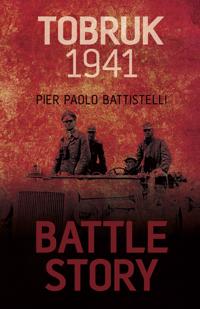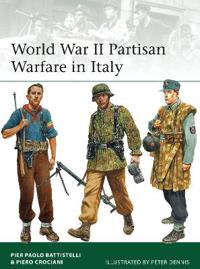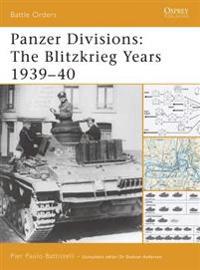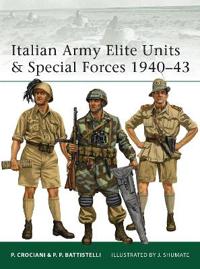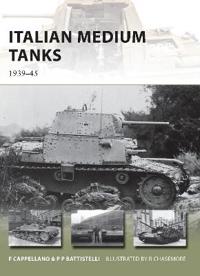Rommel's Afrika Korps (Pocket)
avPier Paolo Battistelli, Duncan (EDT) Anderson, Pier Paolo Battistelli
ISBN: 9781841769011 - UTGIVEN: 2006-10From their first deployment through to the conclusion of the battle of El Alamein, an engagement that irrevocably changed the strategic situation in the Western Desert, this book covers the complex and oft-changing organisation and structure of German forces in North Africa.[...]
Erwin Rommel (Pocket)
avPier Paolo Battistelli, Peter Dennis, Pier Paolo Battistelli
ISBN: 9781846036859 - UTGIVEN: 201007Nicknamed 'The Desert Fox' for his cunning command of the Afrika Korps, Erwin Rommel remains one of the most popular and studied of Germany's World War II commanders. He got his first taste of combat in World War I, where his daring command earned him the Blue Max, Germany's highest decoration for b[...]
Heinz Guderian (Pocket)
avPier Paolo Battistelli, Adam Hook, Pier Paolo Battistelli
ISBN: 9781849083669 - UTGIVEN: 201104Some consider Guderian to be the founding father of blitzkrieg warfare, and he certainly brought the whole concept to public attention and prominence, chiefly through the publication of his book "Achtung Panzer" in 1937. He commanded the XIX (Motorized) Army Corps in the 1939 Polish campaign, and Pa[...]
Albert Kesselring (Pocket)
avPier Paolo Battistelli, Adam Hook, Pier Paolo Battistelli
ISBN: 9781849087353 - UTGIVEN: 201208Although he is mostly remembered for his part in the campaign in Italy from 1943 to 1945, Generalfeldmarschall Albert Kesselring was also chief of staff of the Luftwaffe in 1936-37, playing a crucial role in the shaping of the service for the coming war. As commander of Luftflotte 1 in Poland and Lu[...]
El Alamein 1942 (Inbunden)
avPier Paolo Battistelli
ISBN: 9780752462028 - UTGIVEN: 2012-04El Alamein 1942 heralded a great victory for the Allied forces in the Second World War and marked a major turning point in the Western Desert campaign. If you truly want to understand what happened and why - read Battle Story. Key profiles explore the tactics and personalities pitted against each [...]
Tobruk 1941 (Inbunden)
avPier Paolo Battistelli
ISBN: 9780752468785 - UTGIVEN: 2012-10The siege of Tobruk lasted 240 days during which the 'gallant garrison' of Allied soldiers, including the famous 'Desert Rats' held out against constant attacks from Rommel's Afrika Korps. The battle became one of the longest sieges in British military history and a potent symbol of British resista[...]
World War II Partisan Warfare in Italy (Häftad)
avPier Paolo Battistelli
ISBN: 9781472808936 - UTGIVEN: 2015-08When Italy surrendered in 1943, it sparked a resistance movement of anti-German, anti-fascist partisans. This book explores the tactics, organizational structure and equipment of the brave Italian resistance fighters. Beginning with low-level sabotage and assassinations, the groups continued to grow[...]
Panzer Divisions (Pocket)
avPier Paolo Battistelli
ISBN: 9781846031465 - UTGIVEN: 2007-11At the outbreak of World War II in September 1939, Germany's armoured forces - the Panzerwaffe - were still in their infancy. The restrictions imposed by the Treaty of Versailles meant that German tank production lagged behind its enemies. Initial armour campaigns in Poland were not overly successfu[...]
Panzer Divisions (Pocket)
avPier Paolo Battistelli
ISBN: 9781846033384 - UTGIVEN: 2008-10On 22 June, 1941, Germany attacked the Soviet Union and her Panzer divisions were to play a major role in this titanic struggle. Although overwhelmed by Soviet numbers, the superior skill and capability of the German Panzer divisions meant that in three months the Germans had advanced deep into Sovi[...]
Italian Army Elite Units and Special Forces 1940-43 (Häftad)
avPier Paolo Battistelli
ISBN: 9781849085953 - UTGIVEN: 201111"Italian Army Elite Units and Special Forces 1940-43".
Italian Medium Tanks (Häftad)
avFilippo Cappellano, Pier Paolo Battistelli
ISBN: 9781849087759 - UTGIVEN: 201212Several factors delayed and greatly hampered the development of an Italian medium tank during World War II. The first was the strategic stance of the country, focussed on a war against neighbouring countries such as France and Yugoslavia, and ill-prepared for a war in the Western Desert. Since these[...]
Albert Kesselring i strid - andra världskriget (Inbunden)
avPier Paolo Battistelli
ISBN: 9789187999093 - UTGIVEN: 2016-05-15

